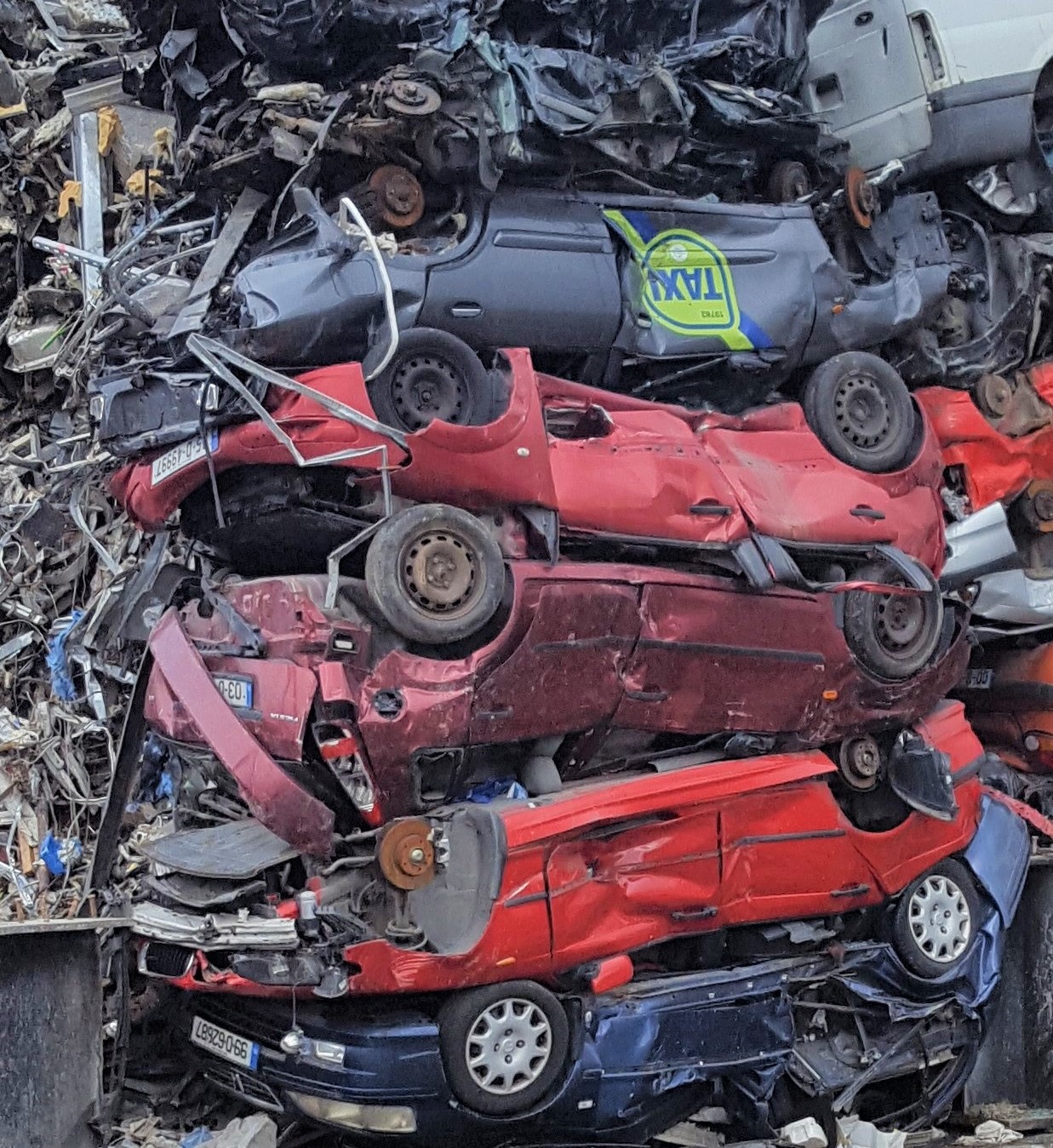
Year: 2016
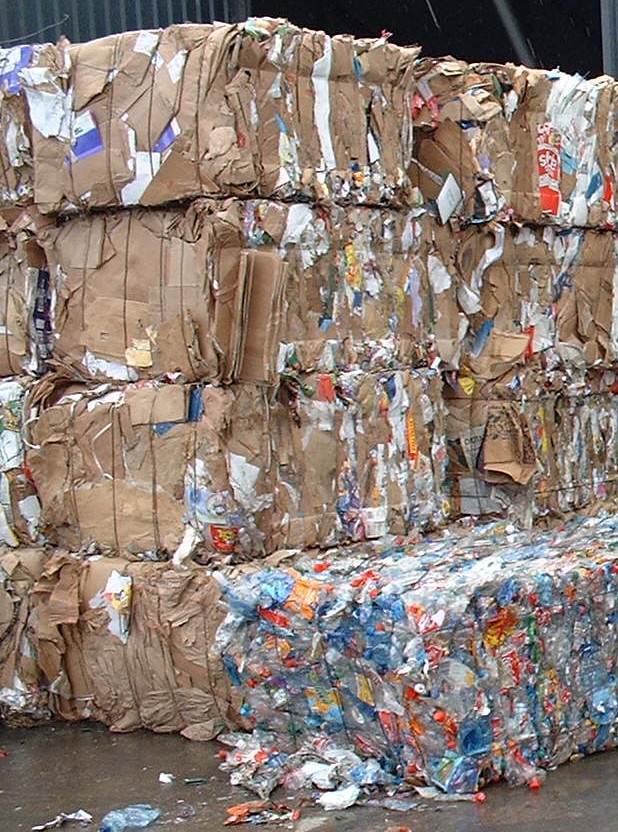
Year: 2016
Year: 2016
This report shows the findings from a study carried out with the HSE in Galway which has a high radon area. Thee Rapid Access Lung Cancer Service at University Hospital was involved in the study.
Year: 2016
The NG4 guidance note was originally published in 2012, and this current update to NG4 was published in 2016. This revised Noise Guidance Note (NG4) is intended to assist licensed sites with the assessment of their potential and actual noise impact on the local environment. In all cases this revised version of NG4 should be applied by licensees and consultants.
Year: 2015
Ambient Air Monitoring In Balbriggan , Dublin
Year: 2015
Ambient air monitoring in Mullingar, Westmeath
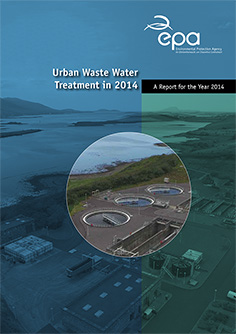
A Report for the Year 2014, November 2015
Year: 2015
This report provides an overview of urban waste water treatment in Ireland during 2014 and includes an assessment of effluent quality against national and European Standards.
Year: 2015
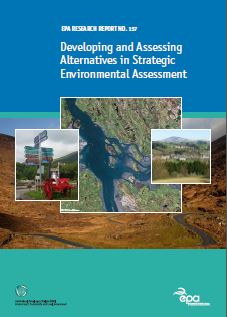
Year: 2015
Alternatives are fundamental to the Strategic Environmental Assessment (SEA) process. This research report makes recommendations for how to incorporate good practice when considering alternatives in the plan and SEA making process. It also sets out a methodology for how to develop and assess alternatives when carrying out SEA.
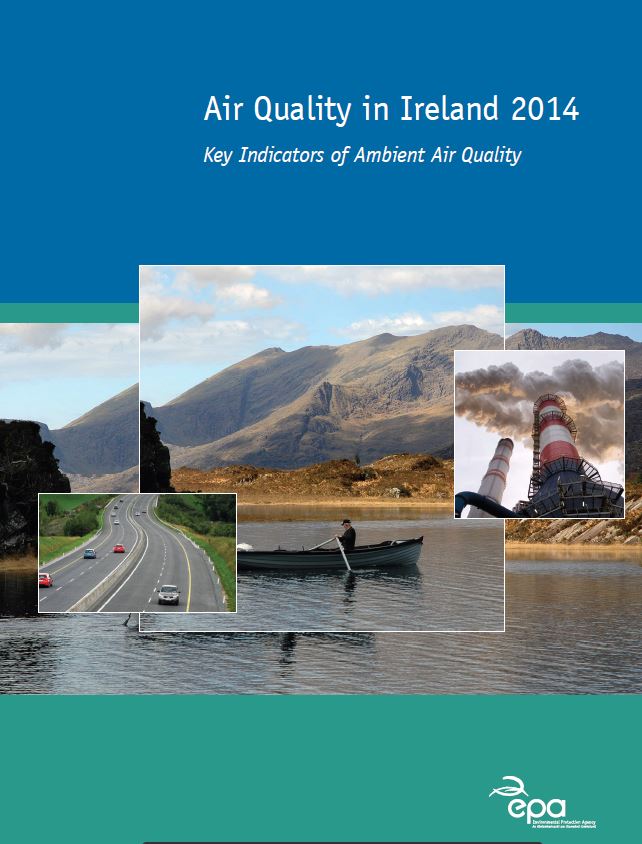
Key Indicators of Ambient Air Quality., September 2015
Year: 2015
Ambient air quality trends based on concentration measurements in 2014 of particulate matter, sulphur dioxide, nitrogen oxides, black smoke, heavy metals, ozone, polycyclic aromatic hydrocarbons, carbon monoxide and benzene.
Príomhtháscairí Maidir le Caighdeán an Aeir sa Timpeallacht, September 2015
Year: 2015
Soláthraíonn an tuarascáil seo forbhreathnú ar threochtaí maidir le caighdeán an aeir thimpeallaigh in Éirinn i 2014. Tá an anailís a chuirtear i láthair anseo maidir le cáilíocht aeir bunaithe ar thoisí áirithe tiúchana de na truailleáin seo a leanas: leibhéil cháithníní, ózón, ocsaídí Nítrigine, dé-ocsaíd sulfair, luaidhe, aonocsaíd charbóin agus beinséin.
WFD Application Phase 1 Technical Overview, August 2015
Year: 2015
WFD Application Phase 1 Technical Overview
Version 2.0 May 2015, August 2015
Year: 2015
WFD Characterisation Approach (May 2015)
Year: 2015
The Manual provides a step by step guide to the SEA and plan-making process with a view to promoting integration between the key stages of both processes. It has been prepared for Local and Regional Authorities by the Western Regional Authority (WRA) in association with the Environmental Protection Agency (EPA). Note: This version was reviewed/updated in 2015.

Year: 2015
The purpose of the report is to give a detailed review of all the main issues related to the quality of the aquatic environment in Ireland, in order to provide guidance towards the protection and enhancement of this valuable resource, and the preparation of second cycle river basin management plans under the Water Framework Directive (2000/60/EC).
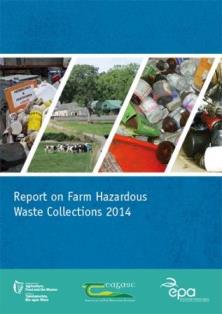
Year: 2015
The EPA, Teagasc, the Department of Agriculture, Food and the Marine (DAFM), 10 local authorities, WEEE Ireland, European Recycling Platform (ERP), and RILTA Environmental Ltd collaborated in 2014 in a joint initiative to facilitate the collection, recover and disposal of hazardous waste from farms.
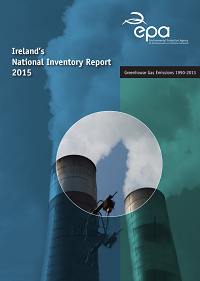
Year: 2015
Ireland's annual inventory submissions including the National Inventory Report (NIR) and Common Reporting Format (CRF) data files and supplementary information if available. The NIR contains transparent and detailed information on the inventory for years 1990-2013. The CRF tables contain all greenhouse gas (GHG) emissions and removals, implied emission factors and activity data.

Year: 2015
Ireland's annual inventory submissions including the National Inventory Report (NIR) and Common Reporting Format (CRF) data files and supplementary information if available. The NIR contains transparent and detailed information on the inventory for years 1990-2013. The CRF tables contain all greenhouse gas (GHG) emissions and removals, implied emission factors and activity data.
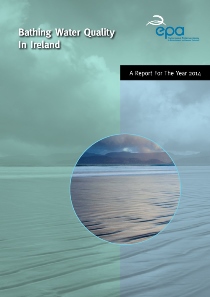
An Overview for the year 2014, April 2015
Year: 2015
Overall the quality of Ireland’s bathing water quality remains extremely high, with 94% of bathing waters complying with new stricter EU standards and achieving at least ‘Sufficient’ water quality status in 2014. Assessment was undertaken using 4 years of data (2011-2014) as opposed to annual data previously. Around 90% of other monitored waters also met the standards for at least ‘Good’ quality.
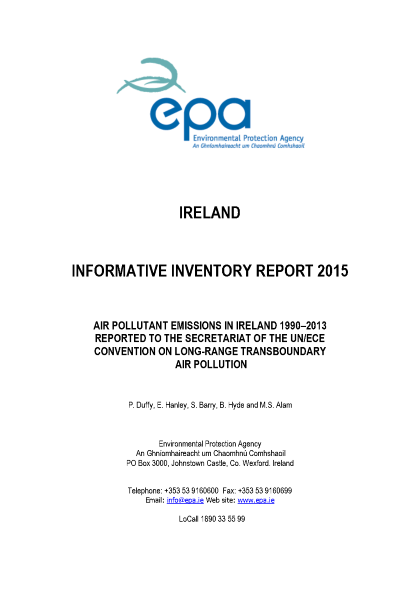
Year: 2015
Ireland's submissions under UNECE Convention on Long-Range Transboundary Air Pollution (CLRTAP) include the Informative Inventory Report (IIR) and Nomenclature for reporting (NFR) tables. The IIR contains detailed information on methodologies, activity data and emission factors and the NFR tables contain air pollutant emissions and activity data for years 1990-2013.